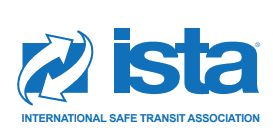JUNE 25, 2024
ISTA Pharma Committee Whitepaper: Thermal Modeling/Simulation

Recently, ISTA published a new whitepaper on Thermal Modeling/Simulation, created by the ISTA Pharma Committee. Amongst the authors are Sonoco ThermoSafe’s Ben Vanderplas as a co-lead.
The whitepaper is an excellent tool for industry practitioners to explore and refine their approach using thermal modeling.
What is thermal modeling?
According to the ISTA Whitepaper, thermal modeling is the creation of a 3D computer generated model of a thermal shipping system that can be used to assess the performance capability of that system under varying design parameters.
However, don’t confuse this with thermal simulation. “Thermal simulation refers to the process of using the thermal model to generate different outcomes in terms of time and temperature performance of the thermal shipping system by changing parameters, for example, product load, ambient temperature profiles (ATP), shipment durations, etc.”, as the paper states.
What does the whitepaper entail?
The team of subject matter experts that collaborated to create the paper have included current thermal modeling tools, how models are characterized, and current use cases that demonstrate the use of thermal modeling.
There are a variety of thermal modeling and simulation tools available for assessing packaging used in transporting temperature-sensitive products. These tools range from simple calculators, often self-developed using thermal equations in software like Microsoft Excel, to advanced Multiphysics finite element analysis (FEA) and computational fluid dynamics (CFD) simulation software. Regardless of the tool, accurate material characterization, appropriate boundary conditions, and realistic modeling assumptions are crucial for producing reliable predictions.
Accurate thermal modeling is important to make good decisions that impact temperature-controlled packaging performance.
The whitepaper goes on to explain that creating a well-tuned thermal model is complex but highly valuable once achieved. This process involves converting the actual components of a thermal shipping system into simplified objects within simulation software, assigning their physical and thermal properties, and setting appropriate boundary conditions. Factors affecting model complexity and accuracy include differences between real components and their modeled counterparts, variances in assigned properties, and the specific calculation setup. Additionally, system variances such as size, active or passive nature, and types of phase change materials (PCM) further influence the model’s accuracy and complexity.
The whitepaper continues to offer guidance on the many facets of a thermal model:
- Assumptions – which help narrow the scope of phenomena modeled, reducing computational time while maintaining result accuracy.
- Accuracy – typically assessed by comparing simulation outputs to real-world data from controlled thermal chamber testing.
- Material properties – To set up a useful and accurate model, all major system components and subsystems must be accurately represented in the 3D modeling space, considering their material properties and dimensions, including the outer shell, insulation assembly, pack-out configuration, payload, and dunnage.
- Model tuning – involves adjusting model parameters to align predictions with test data while ensuring changes are justified by physical principles, avoiding overfitting, and validating accuracy through multiple data sets and component-level calibration to create a reliable and universally applicable predictive model.
The Thermal Modeling Whitepaper continues to explain how thermal modeling can be used for Research & Development, Training & Troubleshoot, Design Qualification (DQ), Post Operational Qualification, and also as a Shipping System Evaluation or a business decision tool.
To read the full ISTA whitepaper, please visit the ISTA website.
Sonoco ThermoSafe was happy to support to development of the whitepaper, made available to all industry practitioners.
To learn more about Sonoco ThermoSafe’s experience and services in thermal modeling and simulation, please visit thermosafe.com.

